Chapter 1
The Basics of Pickleball
The basic concept of pickleball is simple: individuals or pairs—two or four players in a game—use pickleball paddles to hit a ball over a net.
The goal of pickleball is to hit shots that your opponent cannot hit back over the net to you. This makes it similar to other racket sports like tennis or badminton. However, some unique and fun rules make pickleball different from its racket cousins and contribute to its immense popularity.
Let’s dig into the basic rules governing pickleball, the United States’ fastest-growing sport.
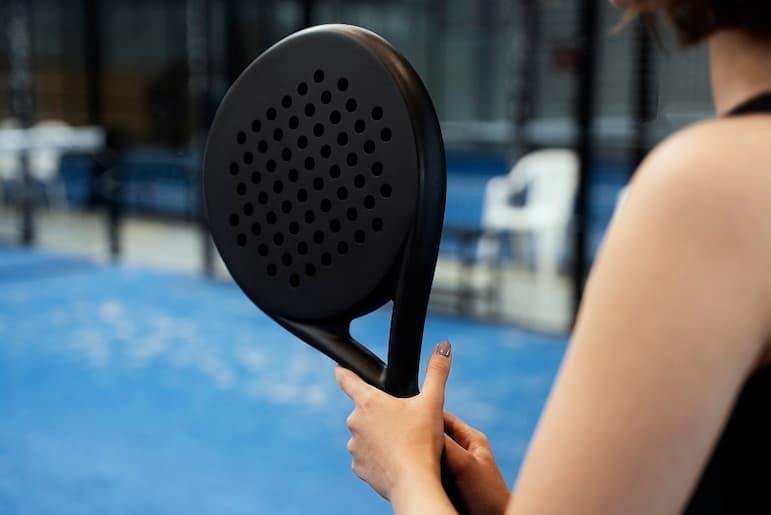
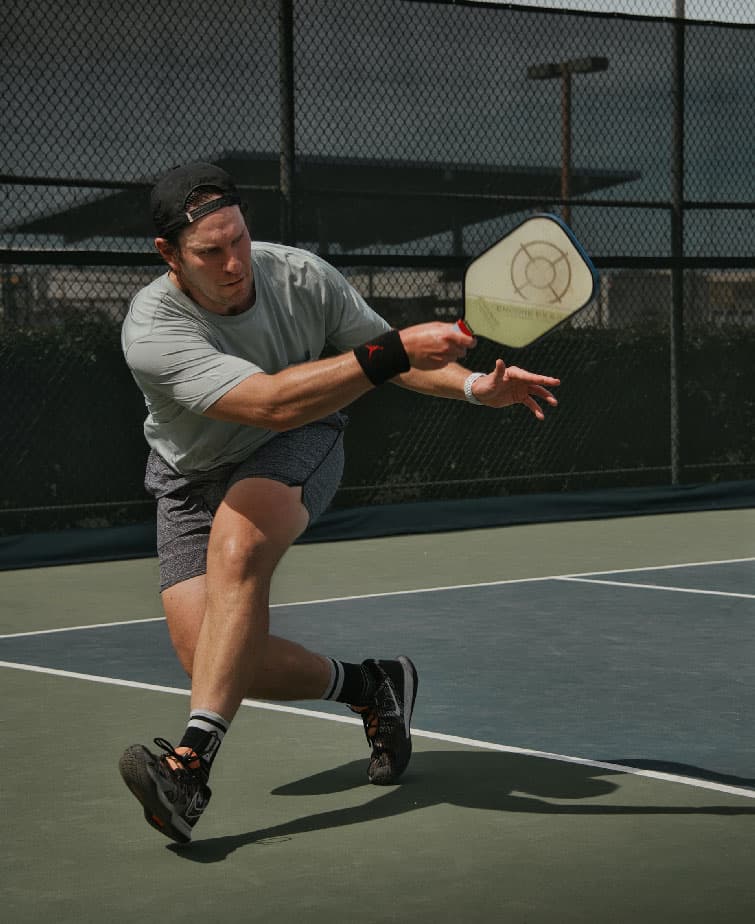
Serving Up Fun
The player on the right side of the court, when facing their opponents, serves first. Your serve must land in the box diagonal to you, bouncing once before the opposing player can legally return it.
Unlike tennis, you serve in pickleball with an underhanded stroke. You must contact the ball below the level of your belly button. While a tennis player uses the serve to start a point aggressively and often even tries for an unhittable “ace,” in pickleball, the server’s purpose is simply to get the point started.
In doubles, the most popular type of pickleball, each player on the team gets the opportunity to serve before the serve switches to the other side. A player keeps serving until their team loses a point. Then, the serve goes to their partner if they still need to serve in the current rotation or to the other side if each player on the first team has had the opportunity to serve.
The only exception to this is on the first point of the game. If side one serves, they only get that opening serve, until they lose a point. After that, instead of their partner getting the opportunity to serve, the other team gets the ball. Each of their players gets to serve. Then, side one gets the ball back for both players to serve.
From the beginning of a pickleball game, the serving would look like this:
- Player One from Team One opens the game, serving until they lose a point.
- After the point is lost, service goes to the other team, with Player One from Team Two serving until they lose.
- After the point is lost, Player Two, Team Two serves.
- After the point is lost, the serve switches back to the first side, with each player from Team One getting a serve opportunity.
Bounce House
Your serve must bounce before your opponent hits it. You must also let their return shot bounce before you hit it. In other words, the ball must bounce once on each side of the pickleball net before you are allowed to volley, which is the term for hitting the ball before it bounces on your side of the net.
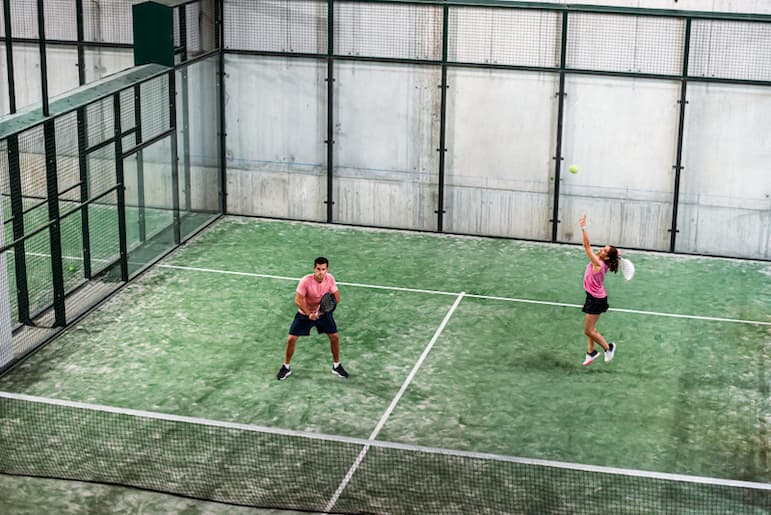
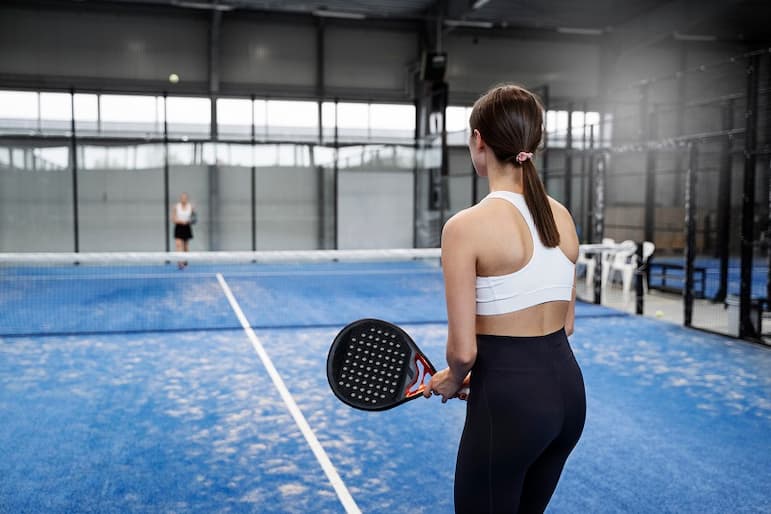
Who’s at Fault?
After the serve, play continues until one side commits a fault. There are four types of fault, each leading to a point for the other side or turnover of the serve:
- The serve lands in the “kitchen”.
No, we aren’t talking about a ball smashing through someone’s windows and landing next to the refrigerator. The “kitchen” is a fun name for the no-volley zone, the area on either side of the net in front of the two service boxes. If your serve lands in the kitchen instead of making it into the opposite serving box, that’s a fault. - A shot goes out of bounds.
If you hit a ball outside the boundaries of the court, that’s a fault. - A ball hits the net.
The final type of fault occurs when the ball doesn’t clear the net. - You volley in the no-volley zone.
As the name suggests, this is not allowed. More on this below.
Volley-ball
The 7-foot zone on each side of the net is the non-volley zone or “kitchen”. You cannot hit the ball in this area before it bounces. If any part of your body is in the kitchen or on the line, there’s no volleying.
If your opponent hits a short shot that bounces in the kitchen, this is known as a “dink.” You can legally enter the no-volley zone to return the ball because you wouldn’t be hitting a volley.
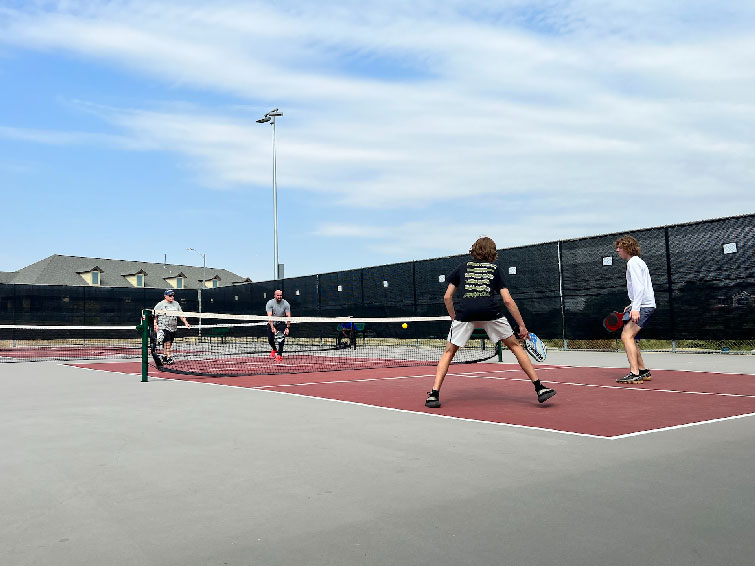
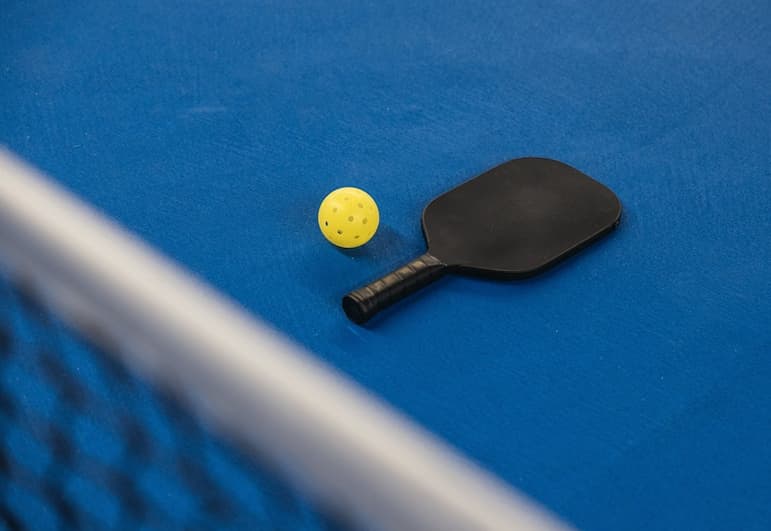
Score! Or not.
Pickleball has its own scoring system. Thankfully, it’s much easier to understand than tennis scorekeeping.
As with sports like tennis and volleyball, you score on points where you are the server. You don’t receive a point if the opposing side serves the ball and they commit a fault. That would cause a change in the server, with no points awarded.
The first team to 11 points wins as long as they are ahead by two or more. If the score is 11-9, the game is over. If it is 11-10, you continue until one team is ahead by two points. That could happen at 12-10, or might take until 20-18, or more.
You now know the basic rules of pickleball and are ready to hit the court and play pickleball. One fantastic thing about pickleball is that the community of players tends to be very inclusive, supportive, and welcoming. Don’t be intimidated if it is your first time or you are still unsure about some rules. Find an experienced player to play against, or don’t hesitate to ask other players on neighboring courts if you have a question or two. You can learn more about the game as you go, but these basics should be more than enough to get you started.
Frequently Asked Questions
What are the dimensions of a pickleball court?
A regulation pickleball court is 20 feet by 44 feet for the playable area.
A recommended area to place a court would be 34 feet by 64. This area would accommodate the out-of-bounds areas surrounding the court as this area is still used during the game (such as during serving).
What are the rules for serving in pickleball?
The second serve would be from the left court. Because of this back and forth, you can keep track of which side you are on based on your score: when you start with an even score, you should serve from the right, and when you start with an odd score, you serve from the left.
After a server faults, no one gets a point for that rally. The player who was previously receiving will then have a chance to serve, following the same pattern of even scores on the right and odd scores on the left. Only the server can score points.
For doubles, in most cases, a team will have a chance for each player to serve before the ball is given to the other team. This does not happen on the first serve, however. The first serve (from the right court) is from the second server on the serving team.
As the second server, their score would be announced as 0-0-2. If the serving team makes a point, the two players on the serving team switch sides. and the same player serves again, this time with a score of 1-0-2. This goes until the serving team faults, and then the other team will have a chance to serve.
Once the other team starts serving, their first server will announce the score, such as 0-3-1. That first server will continue serving (while alternating sides with their doubles partner) until their team faults. Then, the second server will take over, announcing their score, such as 4-3-2, indicating that their team has four points, the other team has three points, and they are the second server.
Serves must be underhand and below the waist, with the entirety of the face of the paddle below the wrist.
Is there a penalty for stepping into the non-volley zone?
The only time you are not allowed to enter the kitchen is during a volley. A volley is when you hit the ball in the air before the ball bounces on your side.
If you are not volleying the ball, you are allowed to step in the kitchen. If you are volleying, you can’t step in the kitchen at any point of the play, whether it’s to catch yourself after leaning forward or to push off from the line to reach backward.
Is pickleball easy to learn for beginners?
Pickleball is a beginner-friendly sport. Because it is slower-paced and is played on a relatively small court, it can be fun for players of all ages and athletic abilities.
What happens if the ball hits the net on a serve in pickleball?
Is there a serve rotation in doubles pickleball?
In doubles pickleball, serving rotates through all four players. On each team, the player beginning on the left court is server one, and the player on the right court is server two.
The first team to serve will start with server two, who will serve diagonally across the court. If the point is successful for the serving team, the two players will switch sides, and server two will serve from the left side of the court across to the other team. This will continue with the serving team switching positions until they fault.
Once the serving team faults, the other team will begin serving. On their first serve, they will start with server one, who will serve from their right court. If the serving team earns the point, the two players on the team will switch positions, and server one will continue to serve.
Once the serving team faults on a ball that started from server one serving it, the second server will serve. They will start on the side that was previously served on when the fault occurred. Their serve will continue until their team faults.
Besides the first serve, each team will go through both servers before serving goes to the other side. Servers only get one chance to hit the ball in the correct section of the court.
Because of the constant rotation between scores, whenever the ball is being served from the left court, the serving team will have an odd score, and whenever the ball is being served from the right court, the serving team will have an even score.
Servers call out the points before they hit the ball in the format of their score, their opponent’s score, and which server number they are, for example 3-5-2.
